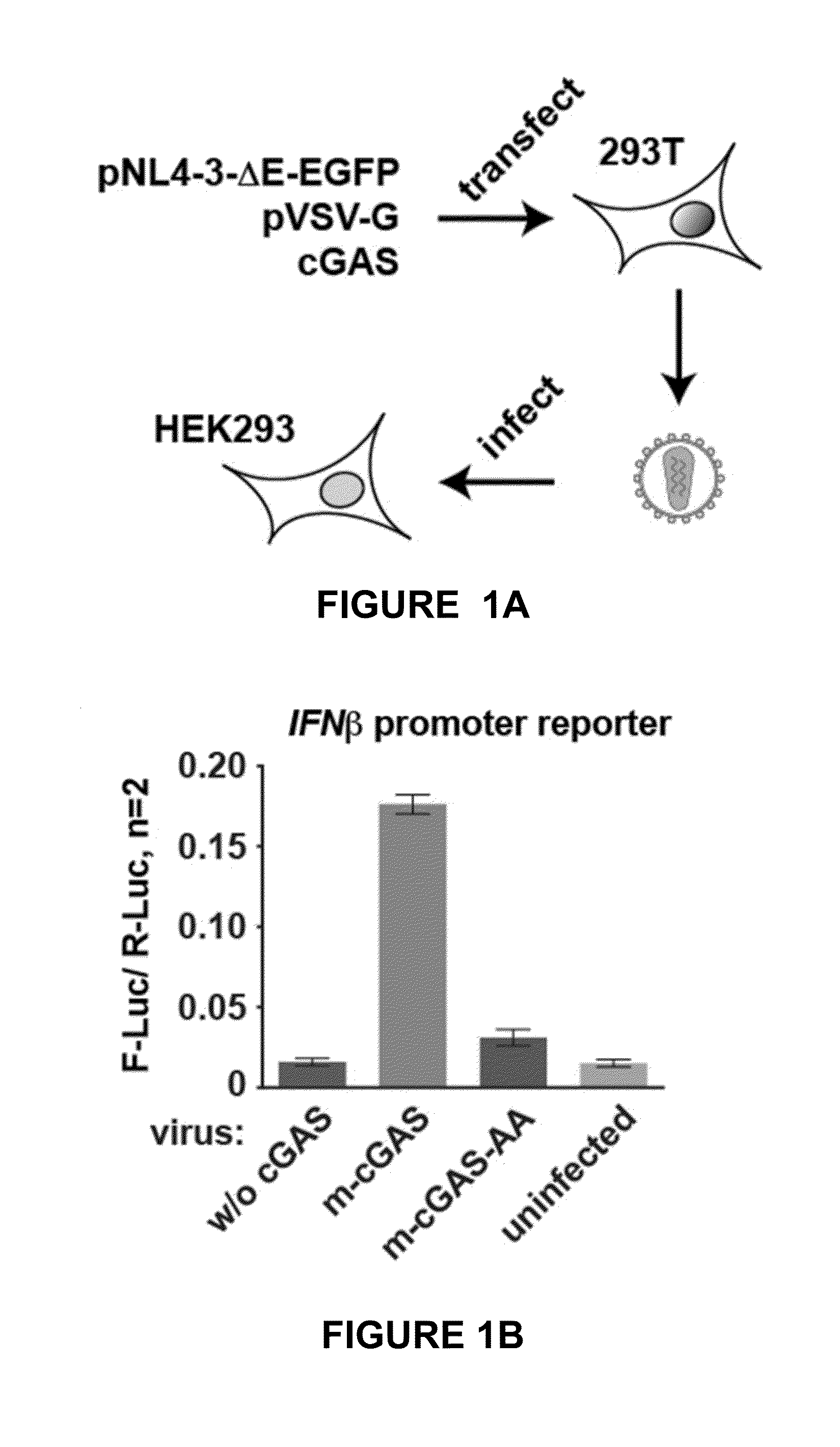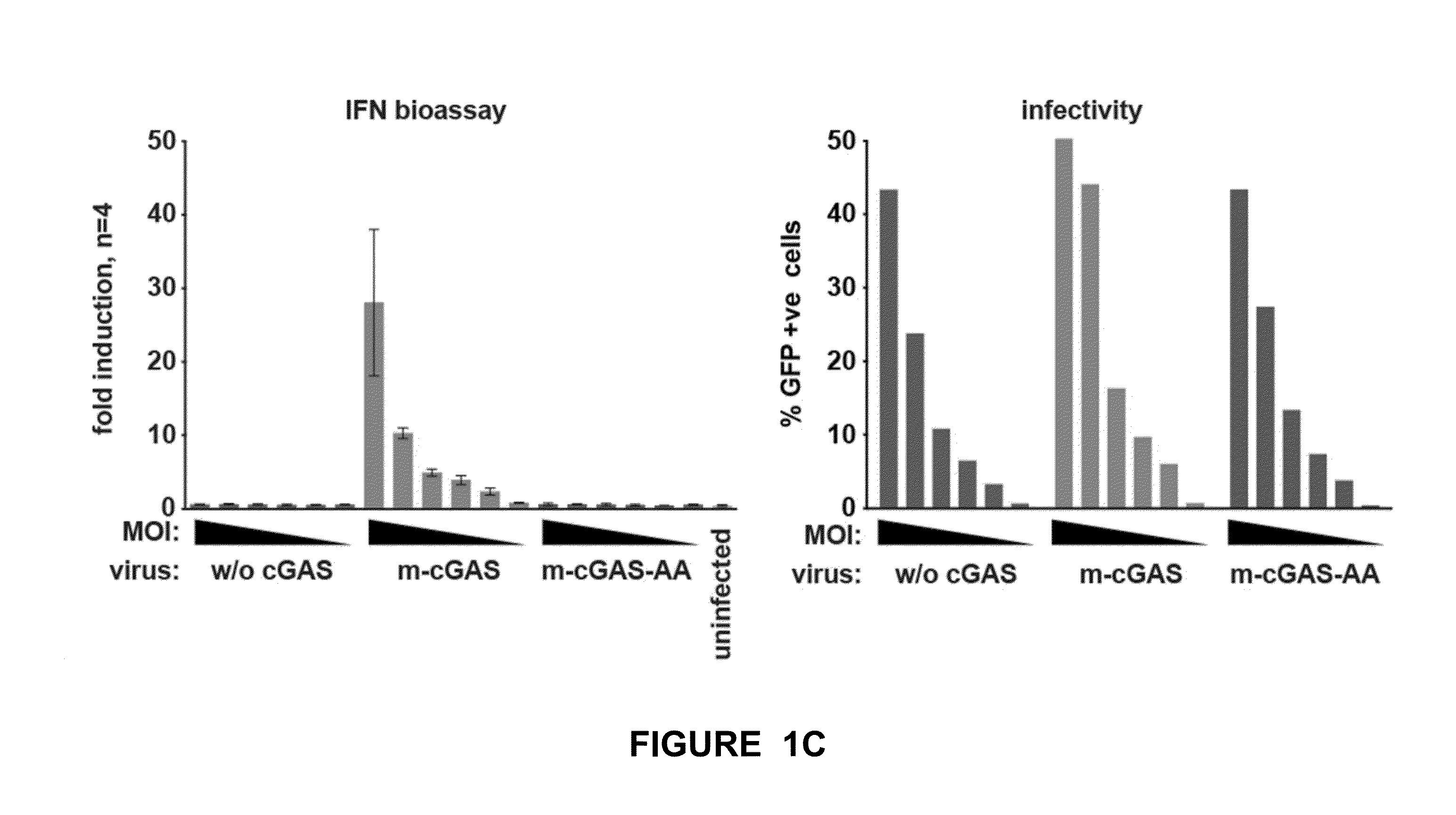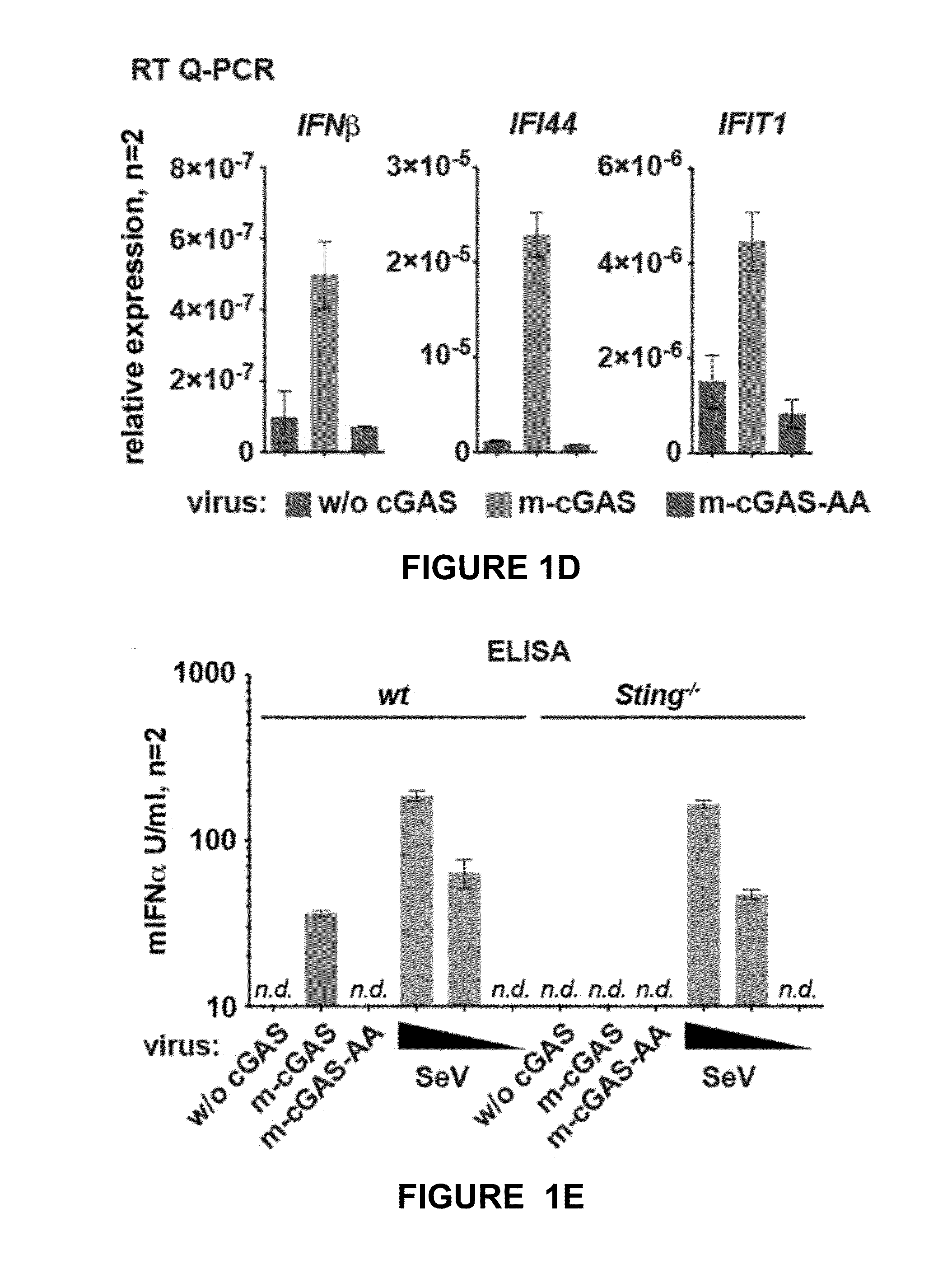Method for preparing viral particles with cyclic dinucleotide and use of said particles for inducing immune response
a technology of cyclic dinucleotide and viral particles, applied in the field of vaccines, can solve the problems of limited potency when used without vectors and the inefficiency of cyclic dinucleotide crossing the plasma membrane of cells, and achieve the effect of enhancing the immune respons
- Summary
- Abstract
- Description
- Claims
- Application Information
AI Technical Summary
Benefits of technology
Problems solved by technology
Method used
Image
Examples
example 1
[0138]The inventors showed that cGAMP can be incorporated into lentiviral particles when these are produced in cGAS-expressing cells. cGAMP is transferred to infected cells and triggers STING-dependent type I interferon (IFN) induction.
[0139]This effect was independent of reverse transcription and integration and may accelerate antiviral responses and broaden the spectrum of cells in which IFN is induced.
Results
[0140]Among the viruses that trigger cGAS-dependent IFN responses in infected cells are retroviruses, including human immunodeficiency virus (HIV). Responses to HIV are thought to involve detection by cGAS of viral cDNA made upon reverse transcription, leading to IFN gene transcription in the same cell where cDNA detection occurred. However, it is conceivable that IFN induction upon retrovirus infection could also occur independently of reverse transcription or cGAS if the infecting virus were to carry within it the cGAMP second messenger. The inventors hypothesized that cGAM...
example 2
Results
[0166]To study cGAS function, the inventors sought to manipulate its expression in human monocyte-derived DCs (Dendritic Cells). They generated a lentiviral vector expressing cGAS, produced lentiviral particles and infected monocytes with the cell-free viral supernatant before differentiating them in DCs. At day 4 of differentiation, the majority of differentiated DCs exposed to the cGAS virus expressed CD86 and were therefore activated, although the efficiency of transduction as indicated by expression of the reporter fluorescent protein BFP was low (FIG. 6A). In contrast, infection with a lentivirus coding only for BFP efficiently transduced monocytes but did not increase the percentage of activated DCs, as compared to non-virus exposed cells (FIG. 6A). This confirmed that the general process of lentiviral vector infection is not sensed by monocytes and DCs and that it could not be responsible for inducing the activation observed in the case of the cGAS lentiviral vector. I...
example 3
Results
[0194]The inventors sought to determine if transfer of cGAMP by viral particles would occur at physiologically relevant levels of cGAS expression. HeLa cells express the cGAS protein. HeLa cells did not contain detectable amounts of intracellular cGAMP at steady-state, but it was detected after DNA stimulation. Disruption of the cGAS gene by CRISPR / Cas9 in HeLa abolished cGAMP production after DNA stimulation. Next, the inventors harvested the pelletable extracellular material of control HeLa, DNA-stimulated HeLa or HeLa transfected with VLPs coding plasmids (that also provide a DNA stimulus). cGAMP was detected in the material of all DNA-stimulated HeLa, consistent with it being packaged in extracellular vesicles (EVs) and viral particles (FIG. 13A). However, only HeLa-derived VLPs induced IP-10 production in PMA-treated THP-1 cells, and not EVs from control HeLa or DNA-stimulated HeLa (FIG. 13B). To ascertain that cGAMP was transferred, the inventors tested the material in ...
PUM
| Property | Measurement | Unit |
|---|---|---|
| concentration | aaaaa | aaaaa |
| concentration | aaaaa | aaaaa |
| time | aaaaa | aaaaa |
Abstract
Description
Claims
Application Information
 Login to View More
Login to View More - R&D
- Intellectual Property
- Life Sciences
- Materials
- Tech Scout
- Unparalleled Data Quality
- Higher Quality Content
- 60% Fewer Hallucinations
Browse by: Latest US Patents, China's latest patents, Technical Efficacy Thesaurus, Application Domain, Technology Topic, Popular Technical Reports.
© 2025 PatSnap. All rights reserved.Legal|Privacy policy|Modern Slavery Act Transparency Statement|Sitemap|About US| Contact US: help@patsnap.com



